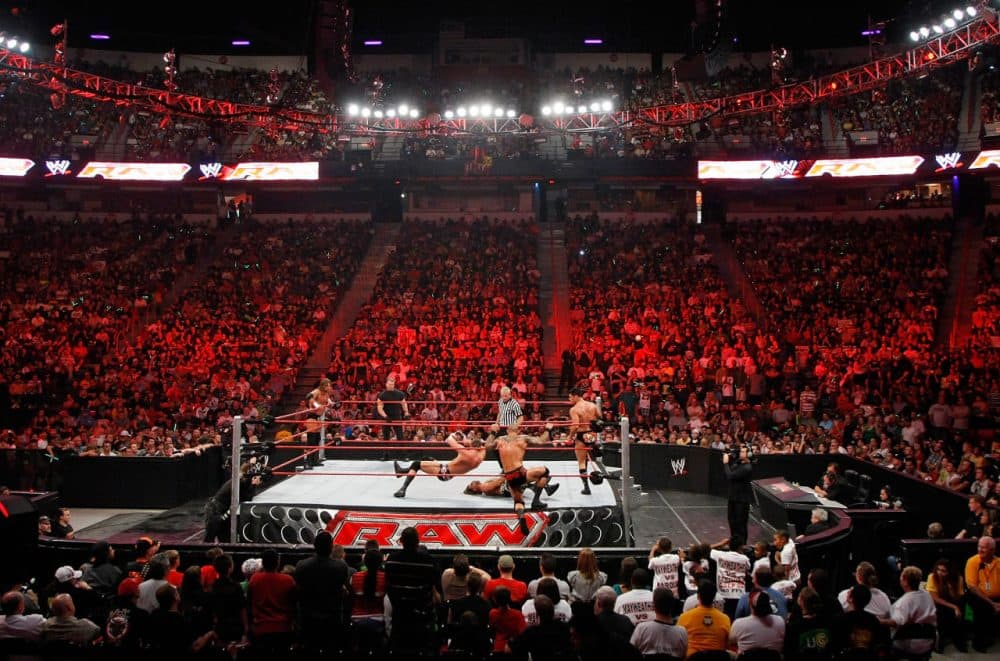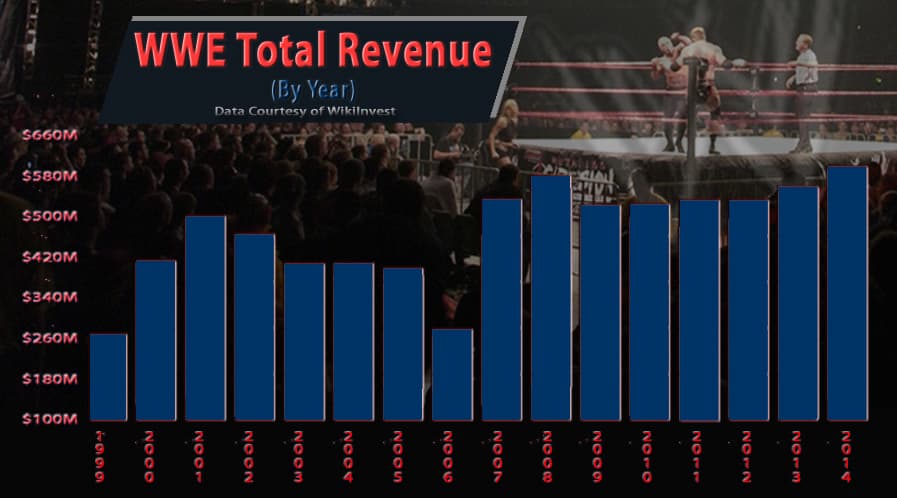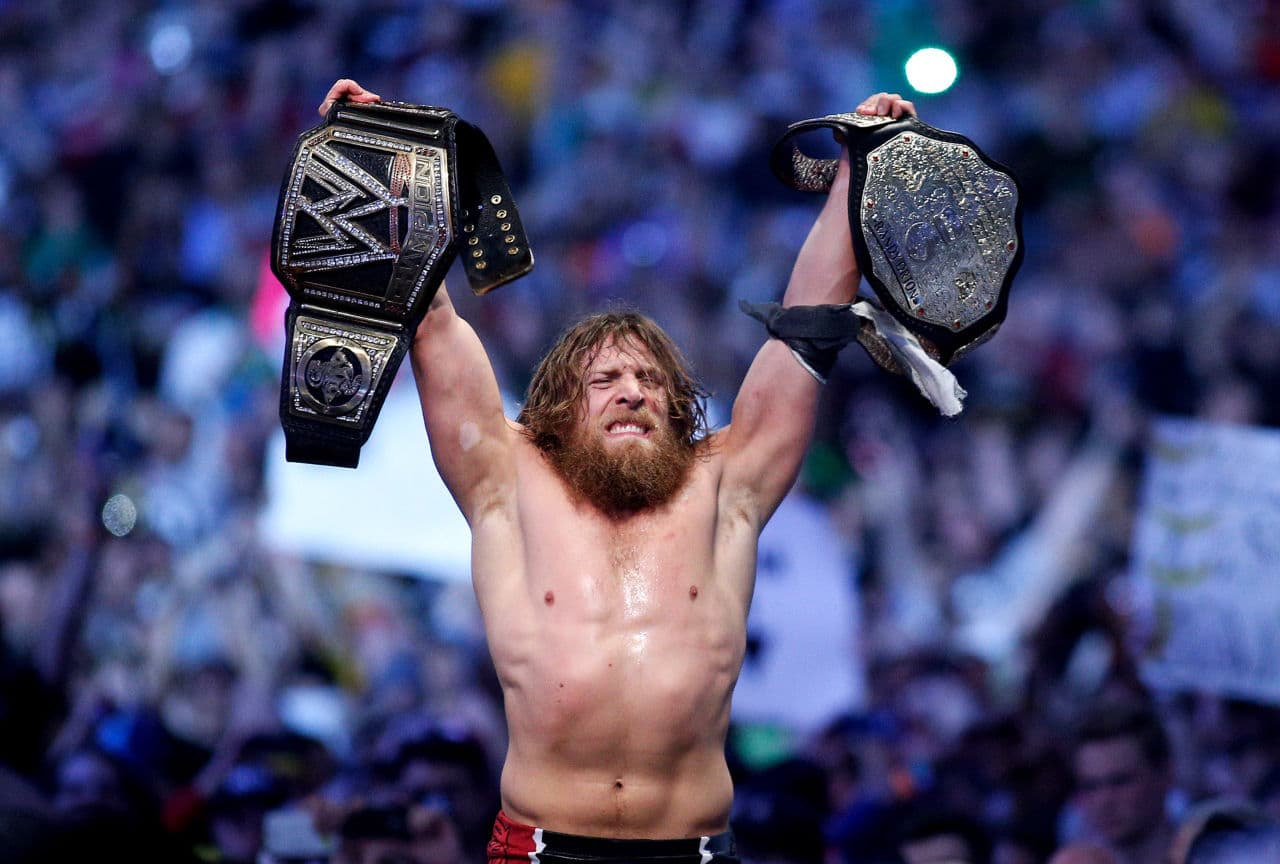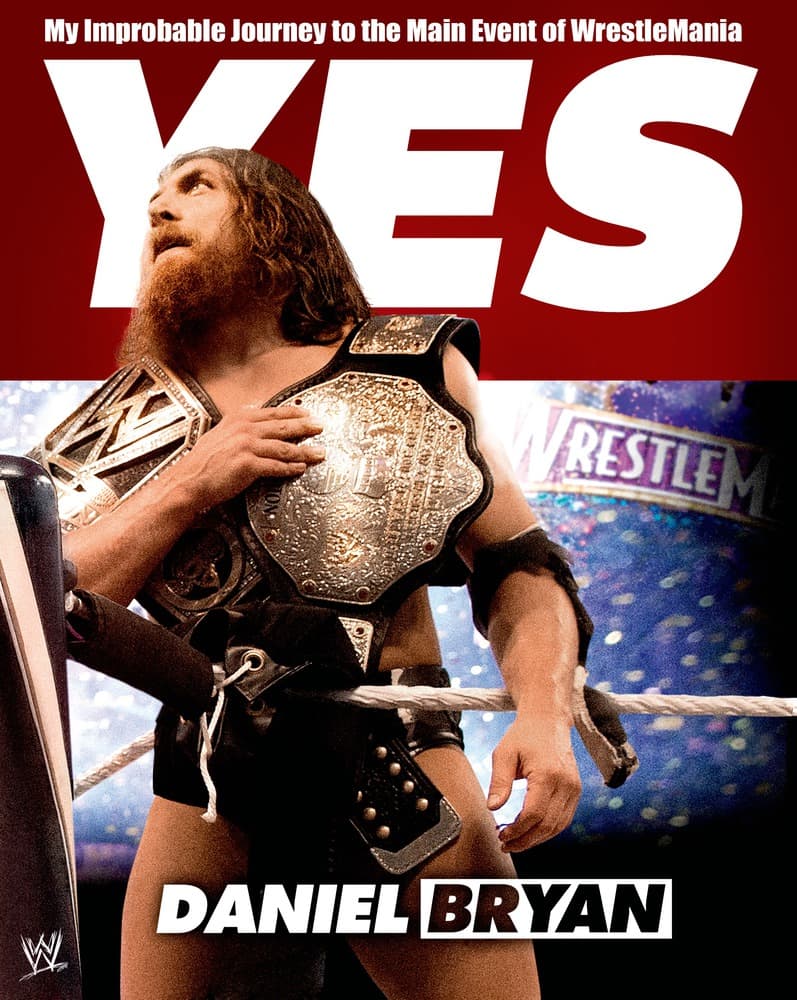Advertisement
WWE Lures Former Fans Back To Pro Wrestling

This story is part of Only A Game’s “Time Show” which examines how the passage of time influences sports.
David Shoemaker has been writing about professional wrestling since 2010, at which point his stories weren’t reaching a broad audience.
"It was like a real oddity," he says. "It used to be, people would sidle up to me in hushed tones [to] tell me that they watched wrestling when they were kids. And now, honestly, I think I get a more positive reaction than the esteemed NBA writer standing next to me."
It’s really hard to overstate how cool the Rock was if you were 8 years old in 1999.
Parker Crane
I’d never paid attention to wrestling, but, starting a few months ago, I noticed more and more people talking on Twitter and Facebook about body slams and dropkicks. And that left me wondering: what happened?
Travelling Back To 1998
To begin to answer that question, let’s go back to 1998. That summer, sports fans were fascinated by the race to catch Roger Maris's home run record. But for one group of fans, baseball took a back seat on Monday nights.
"Sammy Sosa and Mark McGwire were going against each other, just slapping balls out of parks," recalls Jose Zapata, 24. "Guess what, though: on Monday nights, you ain’t watching those games. You are watching wrestling."
 Zapata was just 7 in 1998. Pro wrestling had been on TV for decades. But in the late '90s it entered into a golden age. Two companies — World Championship Wrestling and the World Wrestling Federation — aired competing programs every Monday night that drew huge audiences. The spectacle was massively popular among kids (at least when their parents weren’t meddling).
Zapata was just 7 in 1998. Pro wrestling had been on TV for decades. But in the late '90s it entered into a golden age. Two companies — World Championship Wrestling and the World Wrestling Federation — aired competing programs every Monday night that drew huge audiences. The spectacle was massively popular among kids (at least when their parents weren’t meddling).For Zapata and his friend Parker Crane, wrestlers like Stone Cold Steve Austin and The Rock were superstars.
"It’s really hard to overstate how cool The Rock was if you were 8 years old in 1999," Crane recalls. "There was probably not a cooler — he said the dumbest stuff. His catch lines are like, 'Can you smell what The Rock is cooking?' He called people 'jabronis' all the time. Out of context, not cool at all. But he pulled it off."
Advertisement
Then sometime around the start of 5th grade, Zapata and Crane — and their peers at middle schools across the country — faced criticism of their passion as hard and unbreakable as, well, The Rock: "You know it’s fake, don’t you."
"What makes wrestling difficult at a certain point in your life is the embarrassment of it," Shoemaker says.
The criticism was eventually too much to handle for Zapata and Crane.
"You’re getting into, like, your manhood," Zapata says. "You don’t want to think about fake things. That’s when I hated it. I was, like, 'Guys, come on. We can’t watch this anymore.'"
"There was like a social stigma," Crane says, "and I was like, 'Whoa, glad I’m not watching that anymore.'"
Did they even miss it?
"I really didn’t think about it," Zapata says.
"I didn’t think about really it either," Crane says. "I think it kind of just fell out of my mind."

'WWE Is Theater'
Daniel Bryan, author of the new autobiography “Yes!,” is one of the most popular wrestlers out there today. But at just 5-foot-10 and with a shaggy beard, he looks more like a guy you’d run into at Whole Foods than one of the bulging wrestling stars from the late ‘90s.
"Um, in very general terms, I’m much smaller," Bryan says with a laugh. "I don’t use curse words."
He’s got fans of all ages, but one group stands out: young adults who used to root for the rough-and-tumble stars of the '90s.
 "I get a lot of people who tell me that I got them back into wrestling," he says. "And I’ll ask them sometimes, I’ll be like, 'Well, how did that happen?' And they say they don’t really know. They just connected with the story."
"I get a lot of people who tell me that I got them back into wrestling," he says. "And I’ll ask them sometimes, I’ll be like, 'Well, how did that happen?' And they say they don’t really know. They just connected with the story."While there have always been some storylines — you know, the good guy vs. the heel — recently they’ve become more elaborate.
On camera, Bryan is portrayed as the ultimate underdog — a small but talented wrestler who’s even been left out of some big events while he tries to earn the respect of management. The story’s been a hit.
"WWE is theater with this heavy dose of actual athleticism," says Marissa Payne, a sports writer for the Washington Post — and a wrestling fan. "I really like live theater. And I look at this, and you have these characters in both, and you have sort of this stage in both, and it happens live in front of you."
Payne represents a new wave of wrestling fan: young adults who have latched onto these recent plotlines. It seems to be paying dividends: in 2014, WWE’s revenue reached $542 million.
WWE is theater with this heavy dose of actual athleticism. ... You have these characters in both and you have sort of this stage in both.
Marissa Payne, Washington Post
But then they were caught off guard by a plot twist — a wrestler invoked an obscure rule to win. What impressed Crane and Zapata was that the twist had been foreshadowed earlier in the event, a writing technique far too subtle for the creators of the shows from the late '90s.
"Those sorts of moments are possible where people are aware of the unreality and think they’re above it, but then they get socked by it as well," Crane says.
"And," Zapata says, "it sucks you right back in."
[sidebar title="An Excerpt From 'Yes'" width="630" align="right"]Check out an excerpt from "Yes" by Daniel Bryan with Craig Tello.[/sidebar]It helps that now they can connect with other adult fans who have also been sucked right back in. They all use social media to discuss the latest match — or to point out an especially ludicrous moment.
And that, Shoemaker thinks, is key.
"To publicly state that you see it as the farce that it is, it’s an affirmation for a lot of wrestling fans," he says. "The ancient antecedent for professional wrestling is not Greco-Roman wrestling. It’s Greek theater with gigantic wooden masks so you can see the frown from 50 rows back. That’s what pro wrestling is."
And thanks in part to returning fans like Crane and Zapata, this modern form of Greek theater is currently a hit: next year’s main event — WrestleMania 32 — at the home of the Dallas Cowboys isn’t until April, but there’s already speculation it could be the first to draw more than 100,000 fans.
This segment aired on August 22, 2015.
